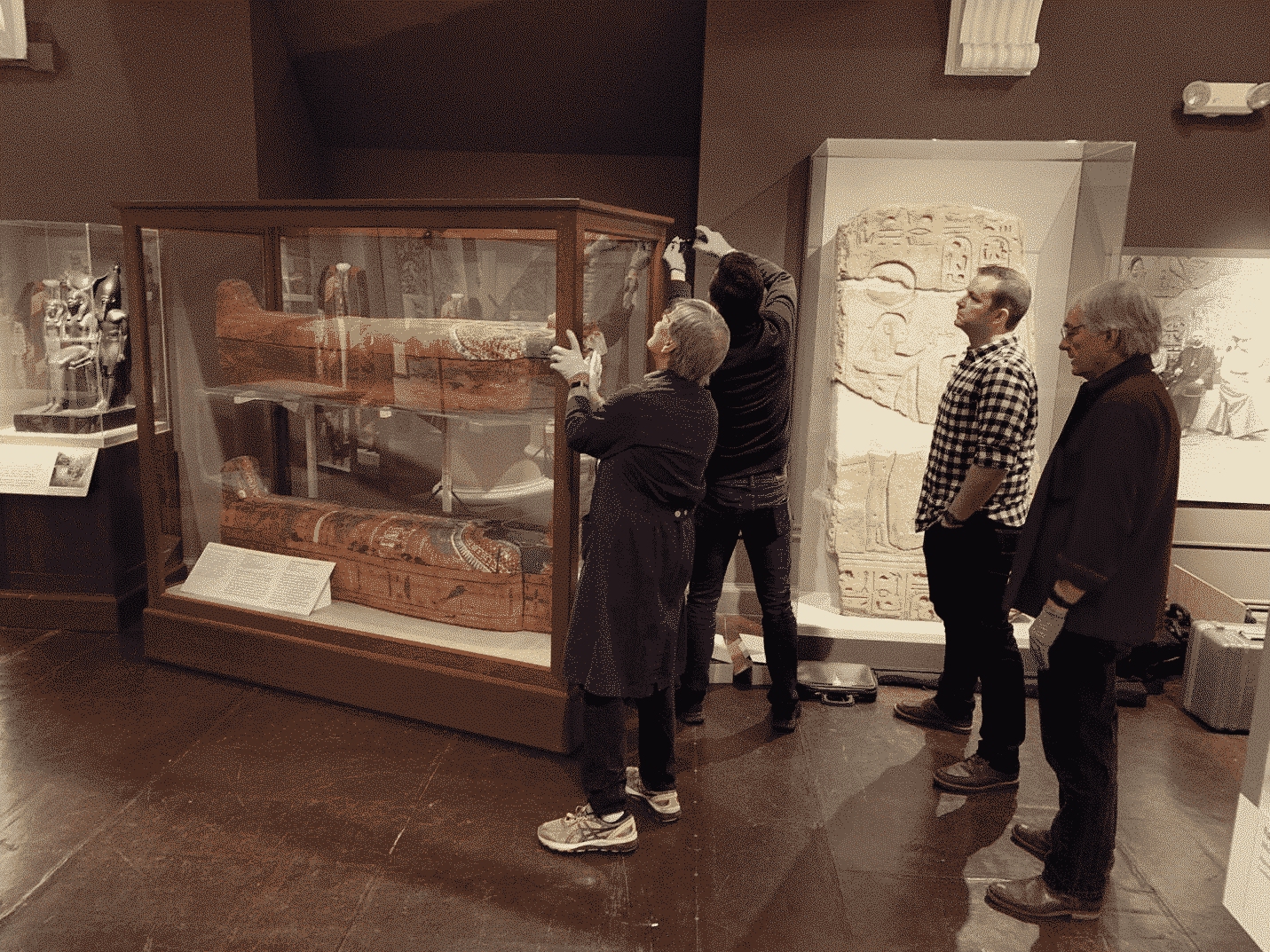A group in the Harvard Semitic Museum has 3D scanned 3 sarcophagi from Ancient Egypt, which are viewable through the 3D modeling website SketchFab now. The campaign is part of a wider project that intends to digitize artifacts from Egyptian civilizations to be shared online for “research and enjoyment.”
The current 3D scanning project was completed with a group this past January. Within the course of roughly a week, three sarcophagi were digitized using 3D scanning technologies.
The ancient coffins belonged to three members of the Temple of Amun-Re at Karnak: a doorkeeper in the temple, Padimut, a guy who had been a priest and metallic engraver; Ankh-khonsu, a doorkeeper who worked in the temple; and Mut-iy-iy, a singer in the temple. All 3 sarcophagi can be dated back into “Third Intermediate Period” between 945 and 712 BC.
The Ancient Egyptian caskets were excavated in 1901 by Percy Newberry and Theodore Davis, and were then given to the Harvard Semitic Museum.
The museum, for its part, has been available since 1889 and now keeps and displays over 40,000 artifacts. Although the 3 sarcophagi have been for quite a while at the museum’s collection, the opportunity to 3D scan them provided a fresh perspective to view and learn about the coffins.
For the 3D scanning procedure, the group utilized an Artec Leo scanner in addition to a Sony RX100 VI camera to catch high-resolution pictures for photogrammetry.
Excitingly, the group has been given the chance to scan not just the exterior but also the insides of this coffins (no mummies). The majority of the coffins had not been opened before, so having the ability to view and catch the inside was something special to its investigators.
Besides photogrammetry and 3D scanning, the group also ran conventional procedures like photography, measurements, pigment and residue analysis and wood sampling. However, the challenge to the group was handling the sarcophagi, which was nearly 3,000-year-old.
Since Peter Der Manuelian, the manager of Harvard Semitic Museum, stated: “The greatest challenge for us was the careful handling of these fragile and heavy coffins, for we needed to lift and turn them in order to document tops, sides, undersides, and bottoms. Day by day, a team of twelve specialists compiled their documentation and took their samples, in a complex arrangement of choreography: coffins rolling in from the gallery (which had become a temporary photo studio), lids turning over, bottoms being scanned and photographed, etc. All went smoothly, and the professional team members never got in each other’s way, despite the time pressure, the differing needs of everyone’s equipment, and the fragility of the materials.”
When the 3D scans and photogrammetry pictures were shot, a colleague from Indiana University, Bloomington, processed the data with Agisoft Metashape, Zbrush, xNormal and 3DS Max to make 3D versions of every coffin. The 3D versions available on SketchFab are also animated, allowing viewers to transfer the lids to observe the interior of the ancient boxes.
The Harvard Museum is also likely to utilize the 3D versions of the sarcophagi to make an interactive display, including a wall screen in the gallery area showing the 3D models and an accompanying program or site with much more in-depth info, like translations of this hieroglyphic inscriptions, or identifications of those scenes around the coffins.
“Beyond this, exciting augmented reality applications await,” added Der Manuelian. “Users could virtually take the coffin out of its display case, lift up the lid and enjoy a walk-through or flyover of the interior.”


